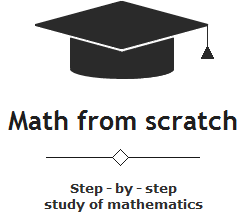A number is some entity denoting the number of any objects. Examples: two apples, five spoons, ten books, one hundred rubles, seven tulips. Every day we turn to numbers, sometimes without even noticing it.
At first, when people learned to read and write, the number of subjects was depicted using sticks:
One subject is depicted as |
Two subjects like | |
Three subjects like | | |
Four subjects like | | | |
Five items like | | | | |
When people became more literate, they realized that a large number of objects with sticks could not be represented, and replaced these sticks with numbers.
Today, in mathematics, numbers are denoted by numbers. These are the numbers 0, 1, 2, 3, 4, 5, 6, 7, 8, 9. The numbers scare away most schoolchildren and students, as they are associated with mathematics and Б─°scary formulasБ─². In fact, there is nothing to worry about. Numbers are simply a collection of characters that are intended to represent numbers. Simply put, to indicate the number of items.
That’s all. The introductory lesson on numbers is completed. In the future we will study it much better, but for now, the discussion in this lesson will be enough.
